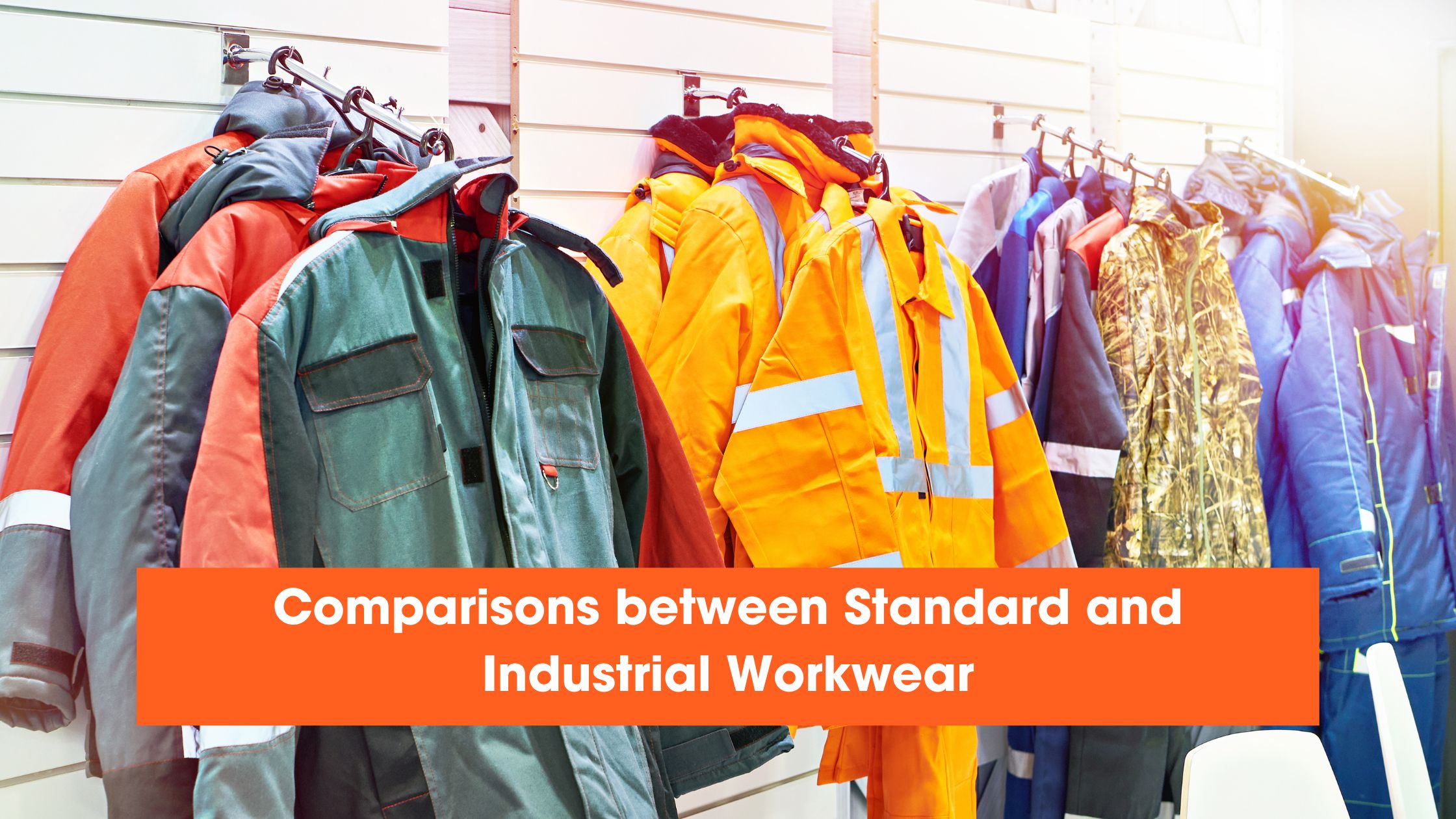Comparisons between Standard and Industrial Workwear
23rd May 2024
The clothes you wear to work is referred to as normal or industrial workwear. Industrial workwear, on the other hand, is a little different. It is more protective and appropriate for potentially dangerous work settings, such as the automotive or metal industries. Ordinary work clothes are usually less protective and lighter. It can be anything you wear to work, including your street clothes and uniforms.

Why is industrial workwear necessary?
Over time, safety requirements have evolved and become increasingly strict. Your employees now require a greater degree of protection, so you must provide them with appropriately fitting clothing to safeguard them from the hazards they face on a regular basis at work. If you don't comply, you run the risk of facing lawsuits from injured workers and fines from the appropriate authorities.
Your workers' level of protection needs and the appropriate work clothes to purchase can be determined via a risk assessment test. These kinds of clothes include, for example:
High-visibility clothing: This type of industrial workwear improves visibility in low-light or high-traffic situations. They can be used outside, as in a road building site, or indoors, as in a warehouse. Reflective strips and other highly reflective decorations are frequently added to clothing as noticeably conspicuous reinforcements.
Coveralls and overalls: These protective clothing items have a long history and are not just used in the industrial sector. The way they are made can determine whether they are appropriate for work or not. Industrial coveralls and overalls are typically made of a durable material that enhances their ability to ward against outside threats.
Workwear that is resistant to fire: These items are especially useful in areas where there is a chance of a fire breaking out or in very hot weather. They are more prevalent in the chemical, food manufacturing, and energy sectors.
Workwear: Industrial or Regular?
Features
Because industrial workwear has different qualities depending on the use, it has become increasingly effective over time. Industrial workwear for the chemical industry is designed differently than it is for the automobile industry. In any case, every piece of workwear has the best qualities, such as no openings, for those who handle machinery; a full enclosure lowers the possibility that the garment will become lodged in a device. When working in regions where there is a high risk of explosion, workers typically wear clothing with anti-inflammable properties; nonetheless, clothing without pockets is not worn in dusty or potentially toxic situations. Work clothes for radioactive or acidic environments need to be impermeable, seamless, and non-perforated. Industrial clothing design is determined by a particular work environment.
Regular workwear's qualities don't fit the particular situation. For example, the garments may be ill-fitting or punctured, revealing areas of the body that pose no risk to the employee. They are exempt from the protective standards required in the industrial sector.
Costs
Industrial workwear is more expensive than standard work attire, particularly if you select premium protection gear. Because industrial wear has precise intricacies that offer them the essential protection levels, their higher expenses are often worth it. The materials that are employed must possess intrinsic qualities that enable them to receive the necessary processing in order to obtain the essential shielding capabilities. The required level of security necessitates more advanced production solutions, which explains the greater cost.
Fabrics
When creating industrial protective apparel, Workwear UK manufacturers consider a number of elements to assess the suitability of a certain fabric. Some of the crucial factors taken into consideration are the resistance to shrinkage and the lack of static electricity. For this reason, industrial clothing typically consists of multiple fabric kinds rather than just one. When determining the fabric's endurance in varying climatic or seasonal weather conditions, as well as the conditions within the work vicinity, other key aspects to consider are its strength, texture, and density. Industrial textiles need to be of a higher calibre to endure frequent use without breaking down. Any mistake made when combining the components could have disastrous effects when the workwear is sold to the general public.
The clothes people wear to the office or other places of employment where there is little risk of injury are not the same as industrial work attire. If you haven't already, they are well worth investing in since they greatly enhance an organization's worth. Work Wear Club offers top-notch styles, including long-lasting trousers that resist flames in UK. Our selection of categories includes insulated, CSA-compliant, and waterproof apparel, all of which can dramatically lower the likelihood that your team will sustain accidents.

 British Pounds
British Pounds
 United Arab Emirates Dirham
United Arab Emirates Dirham
 Australian Dollar
Australian Dollar
 Euro
Euro
 US Dollar
US Dollar
 FREE UK DELIVERY ON ALL ORDERS OVER £75
FREE UK DELIVERY ON ALL ORDERS OVER £75




